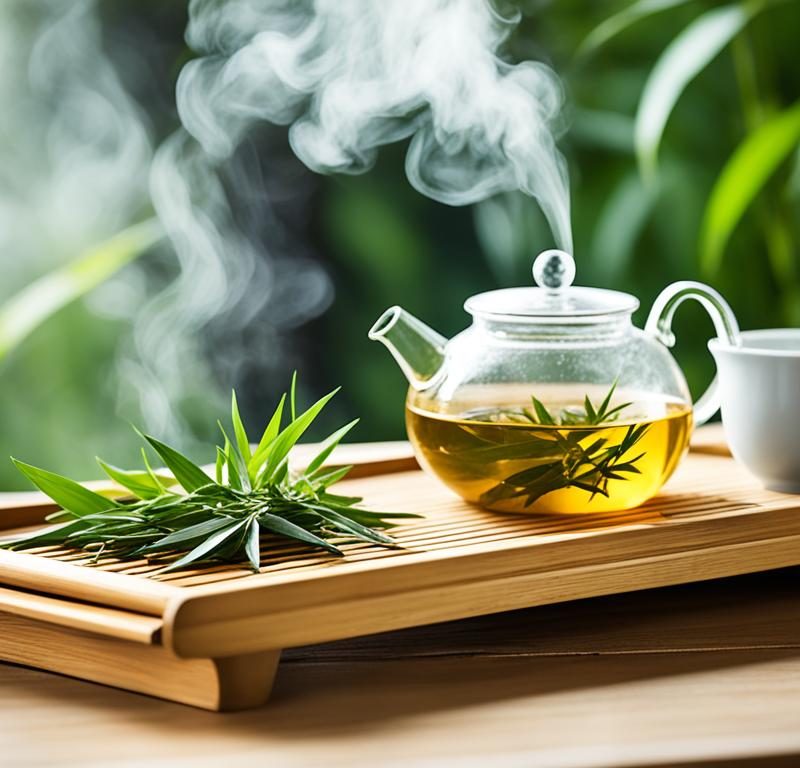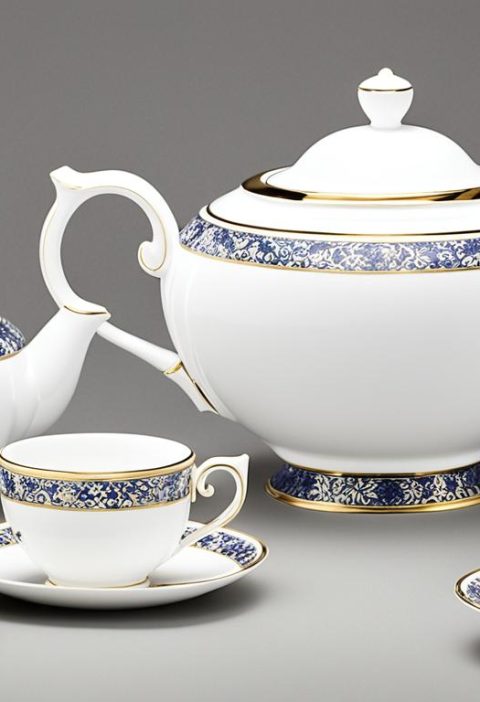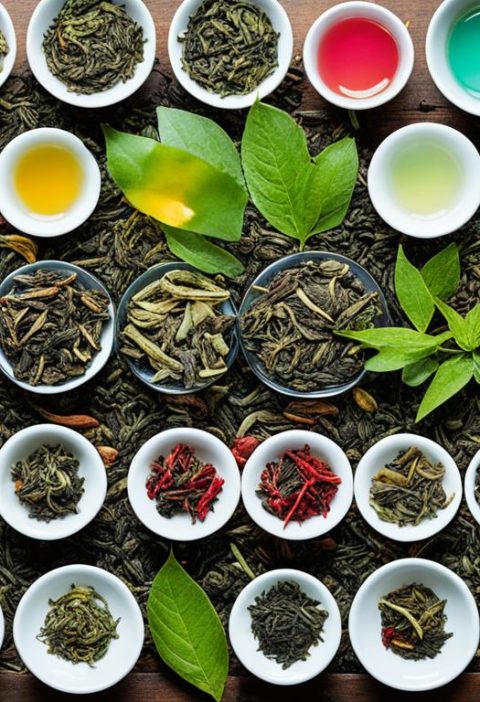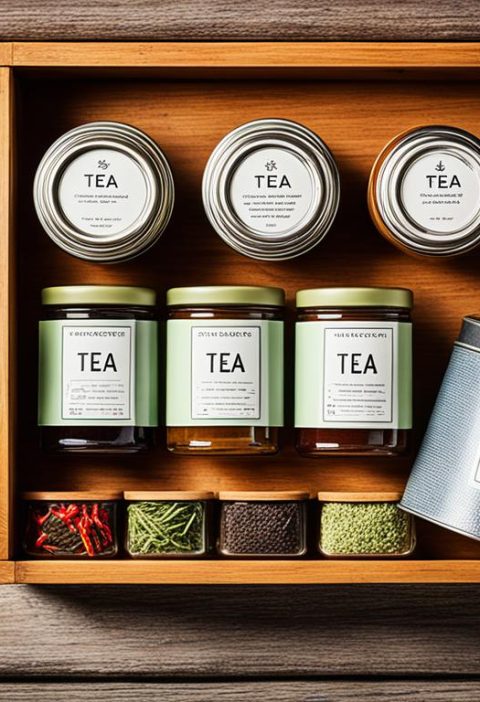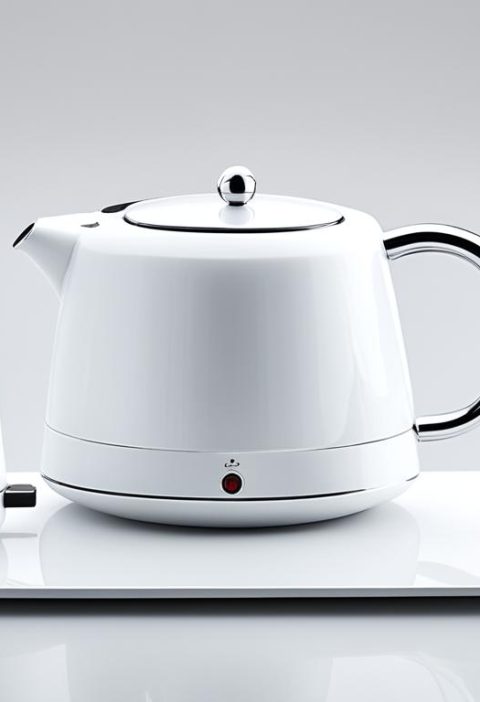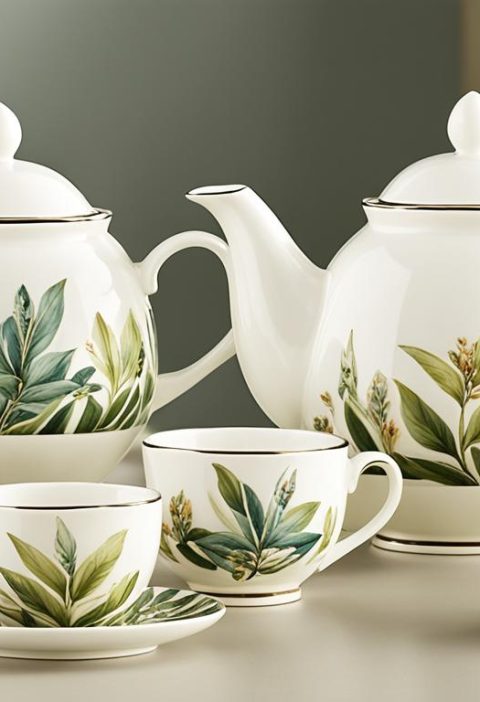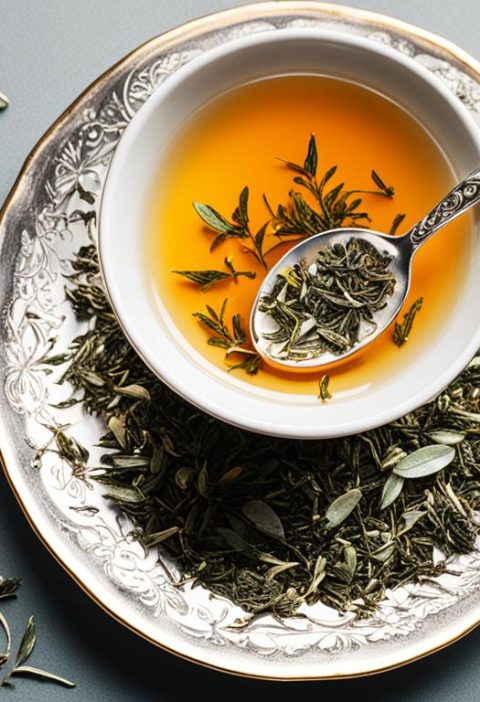When it comes to choosing the perfect tea tray for your tea set, the material plays a crucial role in both functionality and style. With a wide variety of options available, it can be overwhelming to determine which material is best suited for your needs. In this article, we will explore the different materials for tea set serving trays and their benefits, helping you make an informed decision.
Why are bamboo trays a popular choice for tea sets?
Bamboo trays have become increasingly popular in recent years as a preferred choice for tea sets. Their lightweight nature, durability, and eco-friendly properties make them highly desirable among tea enthusiasts. Let’s delve into the key reasons why bamboo trays have gained such widespread admiration.
Durable and Lightweight
Bamboo trays are renowned for their exceptional durability and lightweight qualities. The natural strength of bamboo ensures that the tray can withstand regular use without easily succumbing to wear and tear. Its lightweight nature makes it effortless to transport, maneuver, and serve tea with ease. Whether you’re hosting a tea gathering or enjoying a solitary moment with a cup of tea, bamboo trays offer unmatched convenience.
Eco-Friendly and Sustainable
One of the standout features of bamboo trays is their eco-friendly nature. Bamboo is an incredibly sustainable material, known for its rapid growth and ability to regenerate without the need for replanting. Unlike other materials that contribute to deforestation and environmental degradation, bamboo is a renewable resource that minimizes ecological impact. Opting for a bamboo tray demonstrates your commitment to eco-conscious living and sustainability.
Easy to Clean and Maintain
Keeping your tea set clean and well-maintained is essential for preserving its longevity and ensuring optimal hygiene. Bamboo trays simplify the cleaning process with their smooth surfaces, which can be effortlessly wiped down with a damp cloth. The natural antibacterial properties of bamboo enhance cleanliness, making it a hygienic choice for tea serving. Additionally, bamboo is resistant to stains and odors, allowing you to enjoy tea without any lingering aromas or discoloration affecting your experience.
Aesthetically Pleasing
In addition to their practical benefits, bamboo trays offer a visually appealing aesthetic that adds a touch of natural beauty to your tea-serving ritual. The warm, earthy tones and unique grain patterns present in bamboo create a harmonious and calming atmosphere, complementing the overall ambiance of your tea set. Whether you prefer a minimalist or traditional aesthetic, bamboo trays effortlessly blend with various decor styles, elevating the overall tea-serving experience.
It’s no wonder that bamboo trays have become a favored choice among tea enthusiasts worldwide. Their lightweight construction, durability, eco-friendly nature, and aesthetic appeal make them a perfect companion for any tea set.
| Benefits of Bamboo Trays for Tea Sets |
|---|
| Lightweight and durable construction |
| Eco-friendly and sustainable material |
| Easy to clean and maintain |
| Aesthetically pleasing and enhances ambiance |
What are the advantages of porcelain trays for tea sets?
When it comes to tea set accessories, porcelain trays are a popular choice for their elegant appearance and practical benefits. Let’s explore the advantages of using porcelain trays to enhance your tea serving experience.
Why Choose a Porcelain Tray?
Porcelain trays offer a touch of sophistication to any tea set. Their smooth surface and delicate craftsmanship add an elegant aesthetic to your tea serving ritual. Whether you have a traditional or modern tea set, a porcelain tray complements the overall look and feel.
Ease of Cleaning and Moisture Resistance
One of the highlights of porcelain trays is their ease of cleaning. Thanks to the non-porous nature of porcelain, it resists moisture absorption, preventing the buildup of mold and mildew. This makes it a breeze to wipe clean after each use, keeping your tea set hygienic and in pristine condition.
Protecting Your Teaware
Porcelain trays provide a stable base for your teaware, protecting it from accidental spills and preventing the teacups from tipping over. The hard surface of a porcelain tray minimizes the risk of breakage, offering peace of mind while serving your guests or enjoying a peaceful tea moment alone.
However, it’s important to handle teaware carefully on a porcelain tray, especially delicate items like teacups or porcelain teapots. While the surface is smooth and resistant to moisture, it can be prone to chipping or cracking if not handled with care.
Incorporate a Porcelain Tray into Your Tea Set Experience
To add a touch of elegance and practicality to your tea set, consider incorporating a porcelain tray into your serving collection. Its timeless appeal and easy maintenance make it an excellent choice for tea connoisseurs and those who appreciate the finer details of tea ceremony.
Enhance your tea serving experience with a porcelain tray, a versatile accessory that combines elegance, easy cleaning, and moisture resistance for a delightful tea moment.
Are DIY tea trays a viable option?
For tea enthusiasts who love a touch of personalization, DIY tea trays can be a fantastic choice. Creating your own tea tray allows you to customize it according to your preferences and requirements. One creative option involves using a secondhand glass or ceramic baking tray combined with a thin metal baking sheet.
To assemble your DIY tea tray, simply pierce holes in the metal sheet to allow for drainage and then place it on top of the ceramic baking tray. This clever combination provides the perfect base for your tea set, ensuring that any excess water from tea spills is easily contained and drained away, while still offering a visually pleasing and functional surface.
DIY tea trays offer the flexibility to select the materials and design that resonate most with you. Whether you prefer the delicate elegance of a glass tray or the classic charm of a ceramic option, you can choose the materials that suit your aesthetic preferences and complement your tea set.
Why choose a glass or ceramic baking tray?
Glass and ceramic baking trays are excellent choices for DIY tea trays due to their durability and easy maintenance. These materials are resistant to stains and won’t retain odors, ensuring that your tea tray always looks and smells fresh. Additionally, they provide a stable surface for your tea set, allowing you to serve and enjoy your tea without worrying about spills or accidents.
Why opt for a metal baking sheet?
Adding a metal baking sheet to your DIY tea tray serves several purposes. The metal sheet offers a protective layer for the ceramic or glass tray, reducing the risk of scratching or damage when placing or moving teaware. The pierced holes in the metal allow for drainage, preventing any water from accumulating and potentially damaging your tray or teaware.
Furthermore, the metal baking sheet adds a contemporary touch to your DIY tea tray, creating an interesting visual contrast with the glass or ceramic base. It also provides a subtle metallic element, enhancing the overall aesthetic appeal of your tea serving set-up.
Benefits of a DIY tea tray
By crafting your own tea tray, you have control over its size, shape, and design. You can ensure that it perfectly accommodates your teaware collection and suits your personal style. The DIY approach also allows you to create a one-of-a-kind piece that reflects your creativity and adds a unique touch to your tea-drinking experience.
Moreover, DIY tea trays can be a cost-effective option, especially when using secondhand baking trays. It’s a sustainable choice that repurposes existing materials and reduces waste. Additionally, the DIY aspect brings a sense of satisfaction and accomplishment, making tea time even more enjoyable.
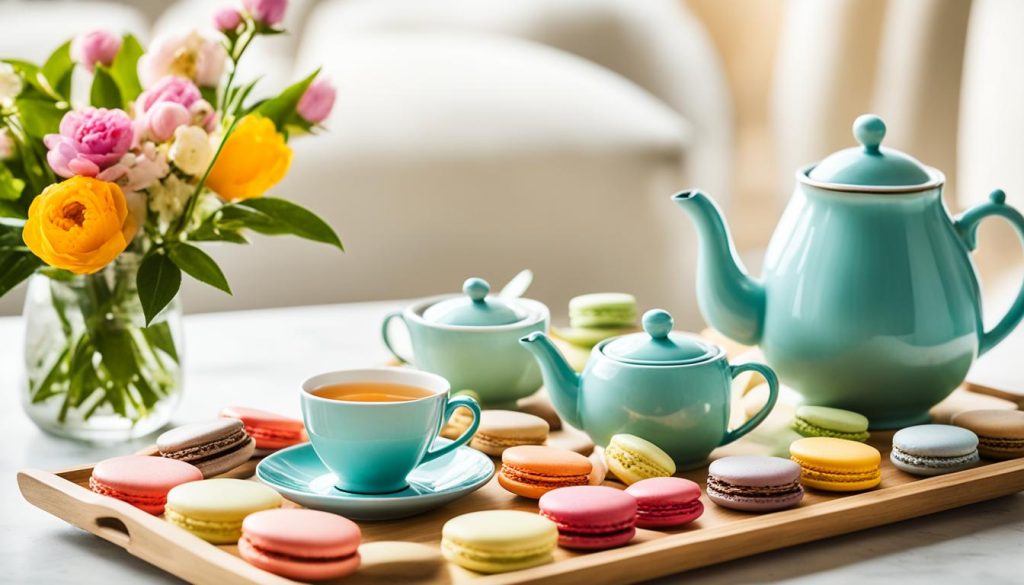
Image of a customizable DIY tea tray that combines a glass or ceramic baking tray with a metal baking sheet.
| Benefits of DIY Tea Trays: |
|---|
| Customizable to your preferences |
| Durable and easy to maintain |
| Unique and one-of-a-kind |
| Cost-effective and sustainable |
What are the drawbacks of metal trays for tea sets?
Metal trays may initially seem like a practical choice for your tea set, but there are some concerns and drawbacks to consider before making a decision. Let’s dive deeper into the potential drawbacks of using a metal tray.
1. Lead Concerns
One of the main concerns with metal trays is the potential for lead contamination. Some low-quality metal trays may contain lead, which can leach into your tea and pose a health risk. It’s important to ensure that the metal tray you choose is made from high-quality materials that are certified lead-free.
2. Smell Concerns
Another drawback of metal trays is the possibility of developing metallic odors when in contact with hot liquids. This can be off-putting and may affect the overall enjoyment of your tea drinking experience. Opting for other materials, such as bamboo or porcelain, can help avoid any unpleasant smells.
3. Heat Conductivity Concerns
Metal trays have high heat conductivity, meaning they can quickly become hot to the touch when exposed to hot liquids. This can make it uncomfortable and even dangerous to handle the tray while serving tea. It’s essential to use caution and consider using tea towels or coasters to protect your hands from the heat.
4. Aesthetic Considerations
While metal trays can have a sleek and modern aesthetic, they may not complement certain tea sets or decor styles. It’s essential to consider the overall aesthetic appeal you want to achieve and choose a tea tray material that complements your personal taste and the ambiance of your tea-serving space.
| Drawbacks of Metal Trays for Tea Sets | Solutions/Alternatives |
|---|---|
| Lead concerns | Choose a metal tray made from high-quality, certified lead-free materials |
| Smell concerns | Opt for tea trays made from other materials such as bamboo or porcelain to avoid metallic odors |
| Heat conductivity concerns | Use caution when handling a metal tray as it can become hot to the touch; consider using tea towels or coasters for added protection |
| Aesthetic considerations | Choose a tea tray material that complements your personal taste and the overall aesthetic of your tea-serving space |
Considering these drawbacks, it’s important to weigh the pros and cons of using a metal tray for your tea set. If you’re concerned about potential lead contamination or uncomfortable heat conductivity, exploring alternative materials may be a better choice for a safe and enjoyable tea serving experience.
Why should tea trays with plastic components be avoided?
When choosing a tea tray for your tea set, it is important to consider the materials used. Tea trays that incorporate plastic components may raise concerns about their long-term exposure to boiling water. While plastic is a versatile material, it may degrade over time or release harmful substances when exposed to high temperatures. To ensure safety and durability for your tea serving experience, it is best to opt for tea trays made from other materials.
What are the risks of using tea trays with plastic components?
Tea trays with plastic components can pose a risk due to the potential reactions of plastic when exposed to boiling water. Plastic may degrade over time, compromising the integrity of the tea tray. Additionally, there is a concern that harmful substances may be released from the plastic when in contact with high temperatures. These substances could potentially contaminate your tea and affect your health.
Are all types of plastic unsafe for tea trays?
While it is recommended to avoid tea trays with plastic components altogether, some types of plastic may be safer than others when it comes to exposure to boiling water. However, it can be challenging to determine the exact composition of plastic used in tea trays, making it difficult to assess the potential risks accurately. For peace of mind and to ensure the longevity of your tea set, it is advisable to choose tea trays made from alternative materials.
What are the alternative materials for tea trays?
There are several alternative materials that are commonly used for tea trays and are considered safer options compared to plastic. Here are a few examples:
- Bamboo: Bamboo tea trays are lightweight, durable, and eco-friendly. They offer a natural and aesthetic appeal, making them a popular choice for tea enthusiasts.
- Wood: Wooden tea trays add a touch of elegance and rustic charm to your tea set. They are known for their durability and natural beauty.
- Porcelain: Porcelain tea trays are renowned for their elegance and smooth surface. They are easy to clean and resist moisture, ensuring a hygienic tea serving experience.
By opting for tea trays made from these materials, you can enjoy the art of tea serving without worrying about the potential risks associated with plastic components.
| Plastic Tea Tray | Alternative Materials Tea Tray |
|---|---|
| May degrade over time Could release harmful substances Risk of contamination Longevity concerns |
Lightweight and durable Eco-friendly options available Natural aesthetic appeal Elegance and rustic charm Easy to clean and maintain |
What other options should be avoided for tea set serving trays?
While there is a wide range of options available for tea set serving trays, it’s important to be aware of a few options that may not be ideal for your needs. Two options that should be avoided are flat trays and tea trays that have the teaware resting in a puddle of water.
What are the drawbacks of flat trays?
Flat trays, although aesthetically pleasing, may not provide the functionality needed for a tea set. The lack of elevated edges can make it difficult to prevent spills and drips from reaching the table surface or creating a mess. Flat trays also lack the depth required to contain any excess liquid, potentially leading to damage or staining of the underlying surface.
Why should tea trays with teaware resting in a puddle of water be avoided?
Tea trays that have the teaware resting in a puddle of water should be avoided due to the potential for damage and contamination. When teaware is left to sit in water for an extended period, it can lead to moisture seeping into the materials, compromising their integrity and leading to mold or mildew formation. This can affect the taste and quality of the tea as well as pose health risks.
| Option | Drawbacks |
|---|---|
| Flat Trays | Lack of functionality, potential spills and damage to surfaces |
| Tea Trays with Teaware Resting in Puddle of Water | Potential damage to teaware, contamination, mold/mildew formation |
To ensure a pleasant and hygienic tea serving experience, it is essential to choose tea trays that address these concerns. Look for trays that have raised edges or wells to contain any spills or excess liquids. Additionally, opt for trays that allow for proper drainage, ensuring teaware is not left sitting in water.
By avoiding flat trays and tea trays with teaware resting in a puddle of water, you can enhance both the functionality and longevity of your tea set, allowing for a delightful tea experience every time.
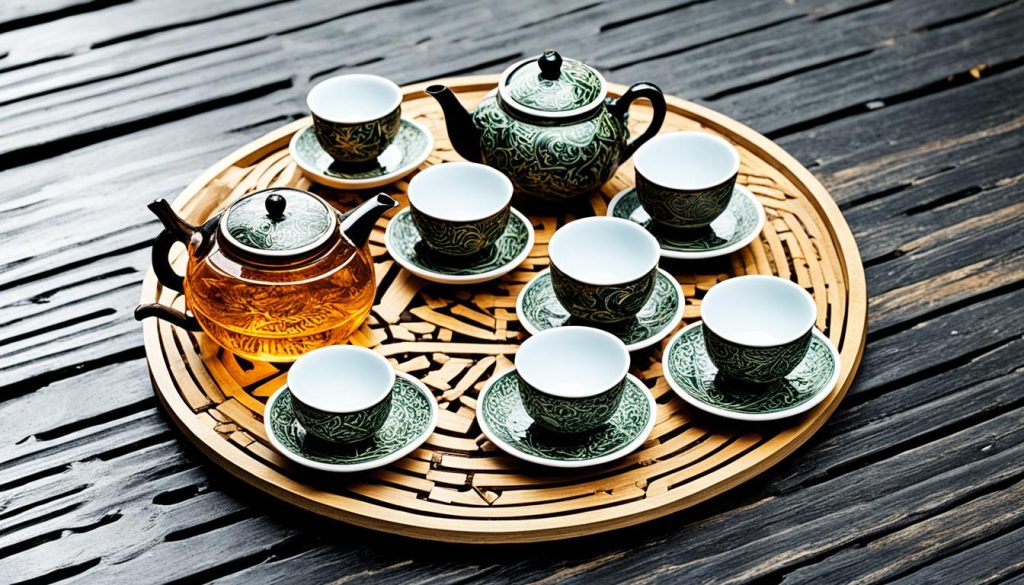
Conclusion
Choosing the right tea tray material is an essential step in enhancing your tea experience. When making this decision, consider factors such as durability, ease of maintenance, and aesthetic appeal. Two popular options that offer a balance of these qualities are bamboo and porcelain.
Bamboo trays are lightweight, making them easy to carry and maneuver. They are also known for their durability, ensuring that they will last for years to come. Plus, bamboo is an eco-friendly choice, allowing you to enjoy your tea while being mindful of the environment.
On the other hand, porcelain trays provide an elegant touch to your tea set. They are easy to clean and resist moisture, preventing any potential mold or mildew buildup. With their smooth surface and sophisticated appearance, porcelain trays add a touch of style to your tea serving experience.
If you’re looking for customization options, DIY tea trays can be a great choice. By using a secondhand glass or ceramic baking tray along with a thin metal baking sheet, you can create a unique tea tray that meets your specific needs and preferences.
However, it’s important to avoid metal and plastic trays. Metal trays may raise concerns about lead contamination and metallic odors when in contact with hot liquids, while plastic trays may not withstand prolonged exposure to boiling water. By choosing the right tea tray material, you can enhance not only the aesthetics but also the functionality and safety of your tea set. Enjoy the art of tea serving by selecting a tea tray that perfectly complements your tea experience.
